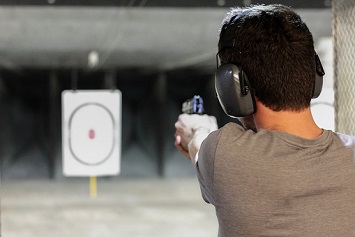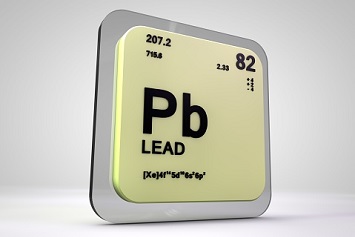With the recognition that exposure to lead in the workplace can cause a host of short- and long-term illnesses, many industrial sectors have phased out its use and found substitutes. That still leaves many other sectors—at least 22, according to the National Institute for Occupational Safety and Health (NIOSH)—where workers are more likely to inhale or ingest lead or absorb it through their skin.
One of the most common workplaces with multiple routes of lead exposure is firing ranges. NIOSH estimates that there are 16,000 to 18,000 indoor firing ranges in the United States. OSHA has just released a new fact sheet listing the legal obligations employers have to protect their employees in these workplaces. The fact sheet also offers recommended practices that provide an additional layer of protection.
Exposure
Exposure to lead at firing ranges can occur in a number of ways, including:
- Shooting firearms with lead bullets or lead-containing primer creates airborne lead in the gun smoke.
- Lead bullet deformation and fragmentation can cause lead exposure at hard-surface bullet-trap systems.
- A building’s standard heating, ventilation, and air conditioning (HVAC) system may not adequately remove airborne lead particles from the range.
- Handling spent cartridges or cleaning firearms can contaminate the hands and skin with lead.
- Improper range cleaning methods (dry sweeping; compressed air; non-high-efficiency particulate air (HEPA)-filtered vacuums) or inadequate cleaning of lead-contaminated surfaces increase the risk that lead will be inhaled or contact skin or clothing.
Initial Determination
OSHA’s lead standard (29 CFR 1910.1025) applies to all occupational exposure to lead (except for construction and agricultural operations) and includes indoor firing ranges where lead bullets or lead-containing primer are used. Employers must make an initial determination by collecting full-shift personal air samples. If the determination indicates that employee exposure is at or above the action level (AL) of 30 micrograms per cubic meter (µg/m3) for more than 30 days per year, the employer must take certain actions, including offering exposed employees blood surveillance and conducting repeat monitoring.
If the determination shows that employees have been exposed for more than 30 days a year to lead levels that exceed the permissible exposure limit (PEL) of 50 µg/m3, employers must implement engineering and work practice controls to reduce exposure to or below the PEL. Specific controls are not named in the standard. Recommended controls include ventilation systems, use of a closed bag system to empty bullet trays and debris, and use of a water mist spray or other type of wet method to keep lead dust from becoming airborne.
Other Requirements
The lead standard has six additional requirements:
- Housekeeping. All surfaces must be kept as free of lead accumulations as practical. Practices such as dry sweeping that spread lead dust are prohibited.
- Respirators. NIOSH-approved respirators must be provided when engineering and work practice controls are not sufficient to reduce lead exposure to or below the PEL. Even when respirators are provided, engineering controls and work practices must continue.
- Clothing and equipment. Full-body work clothing (coveralls or disposable suits), gloves, head and foot coverings, face shields, and vented goggles must be provided to workers exposed to lead above the PEL.
- Hygiene. Food and drink are prohibited in areas where lead exposure is above the PEL. Change rooms, separate storage lockers, and showers must be provided when worker exposures to lead are above the PEL.
- Medical surveillance and removal.Employers must implement a medical surveillance program for workers exposed to lead at or above the AL for more than 30 days a year. Employees with exposures above the AL must be afforded the opportunity to have their blood tested for lead. Employees must be removed from work if lead detected in their blood meets criteria specified in the standard.
- Training and communication. Employees who may be exposed at or above the AL must receive initial and annual training on the standard. Employers are also subject to OSHA’s Hazard Communication Standard (29 CFR 1910.1200).
Blood Tests at Any Level
As noted, the fact sheet supplements each requirement with recommended measures that can be used to comply with the standard as well as provide additional protection. For example, OSHA recommends that employers offer blood lead testing to employees who are exposed to lead at any level in the workplace.
The fact sheet is available here.


